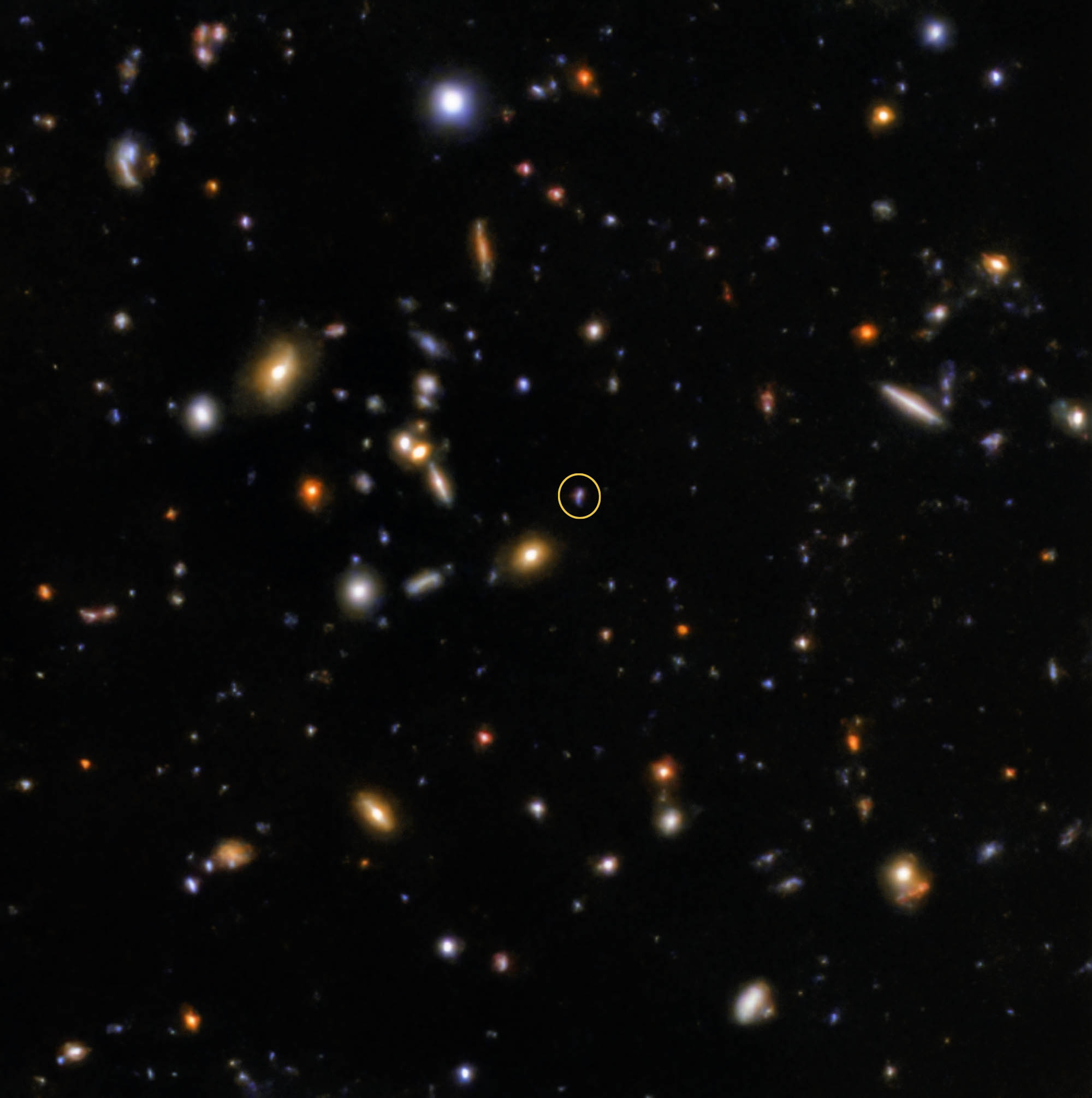NOIRLab: Gemini Observatory’s Quick Reflexes Capture Fleeting Flash

Gamma-ray burst afterglow captured by the Gemini North telescope. The afterglow is marked with a circle. Credit: International Gemini Observatory/NOIRLab/NSF/AURA/K. Paterson & W. Fong (Northwestern University) Image processing: Travis Rector (University of Alaska Anchorage), Mahdi Zamani & Davide de Martin
Rapid follow-up of the optical afterglow from one of the most distant confirmed short gamma-ray bursts (SGRB), thought to be the merger of two neutron stars, is casting new light on these enigmatic objects. The observations, made by the international Gemini Observatory, a Program of NSF’s NOIRLab, confirmed the object’s distance and placed it squarely in the epoch of cosmic high noon, when the Universe was in its “teenage years” and rapidly forming stars. The appearance of an SGRB so early in the history of the Universe could alter theories about their origin, in particular how long it takes two neutron stars to merge to produce these powerful events. Precisely-localized SGRBs are rare, typically only 7–8 are detected per year, and this is the most distant high-confidence SGRB with an optical afterglow detection.
Researchers have used the 8.1-meter Gemini North telescope to measure the optical afterglow of one of the most distant short gamma-ray bursts (SGRB) ever studied. Thought to result from the merger of two neutron stars, SGRBs are cataclysmic events that are almost unfathomable in terms of their basic properties, emitting huge amounts of energy in about one second [1]. Gemini observations of a new, distant SGRB now suggest that this process could occur surprisingly quickly for some systems — with massive binary star systems surviving supernova explosions to become neutron star binaries, and the binaries then spiraling together in less than a billion years to create an SGRB. The research will be published in The Astrophysical Journal Letters.
This object, named GRB181123B because it was the second burst discovered on 23 November 2018 — Thanksgiving night — was initially detected by NASA’s Neil Gehrels Swift Observatory. When the alert of an event from the Swift satellite was broadcast around the world, several telescopes trained their view on it. Within hours, a team from Northwestern University used the Gemini Multi-Object Spectrograph (GMOS), which is also an imager, on the Gemini North telescope on Maunakea in Hawai‘i to record the very faint afterglow of the object.
“We took advantage of the unique rapid-response capabilities and exquisite sensitivity of Gemini North and its GMOS imager to obtain deep observations of the burst mere hours after its discovery,” said Kerry Paterson of the Center for Interdisciplinary Exploration and Research in Astrophysics (CIERA) at Northwestern University, USA, who led the research team. “The Gemini images were very sharp, and allowed us to pinpoint the location to a specific galaxy.”
“This is a wonderful example of time-domain astronomy, involving extremely rapid follow-up of a quickly evolving event,” said Hans Krimm of the US National Science Foundation. “Gemini’s rapid response was critical to catching this event swiftly, and the optical and infrared data add to the excitement of multi-messenger astronomy — where observations of light, gravitational waves, neutrinos and cosmic rays come together to tell a compelling story.”
Notes
[1] Despite their spectacular nature, the formation pathway to a SGRB is unknown. Astronomers believe they are likely formed from a pair of massive stars that were born together and “die” together as neutron stars before merging.
